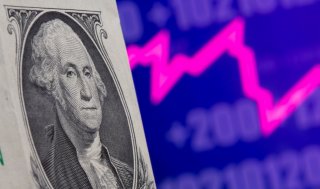Bad News: Interest Rates Could Go Up (And Sooner Than You Think)
The Federal Reserve also stated that the central bank would continue its monthly purchases of $120 billion in mortgage-backed securities, a part of its “quantitative easing” program designed to keep interest rates low through temporarily expanding the supply of money in circulation.
On Wednesday, the Federal Reserve announced that interest rates would be held at their current level – near zero – but could be increased in 2022 and 2023, depending on the progression of the economic recovery.
In a statement, the Federal Open Market Committee (FOMC) – responsible for overseeing the Fed’s use of monetary policy, such as adjusting interest rates and banks’ reserve requirements – announced that, in spite of promising vaccination rates, the economic outlook remained risky due to low employment rates and the possibility of a COVID-19 variant, justifying the rates being held at their current level.
However, the low rates are not likely to last. As noted by CNBC recently, FOMC officials seemed to indicate they now see two possible rate increases coming as soon as 2023, taking many financial watchers by surprise.
The news from the FOMC comes as economic projections are raised across the board. In March, a 6.5 percent GDP increase was projected for 2021; the newly revised estimate suggests it will be 7.0 percent. One number that has not improved, however, has been unemployment, which is still on track to end the year at 4.5 percent – a percentage point higher than in 2019, before the onset of the pandemic.
The Federal Reserve also stated that the central bank would continue its monthly purchases of $120 billion in mortgage-backed securities, a part of its “quantitative easing” program designed to keep interest rates low through temporarily expanding the supply of money in circulation. It confirmed that the decision to hold interest rates at their current low level was unanimous across the FOMC.
However, the Fed’s quantitative easing moves have reportedly caused controversy, as some Fed employees have worried that too much of it will cause high inflation rates. The most recent rate is estimated at 3.0 percent, up from 2.2 percent in March; the target rate is 2.0 percent.
A high inflation rate is a sign of a strong economy, as high inflation usually means low unemployment and vice versa. However, an excessively high rate can indicate an overheating economy, usually resulting in attempts to rein it in from the Federal Reserve, such as decreasing the money supply or increasing interest rates.
Trevor Filseth is a current and foreign affairs writer at the National Interest.

